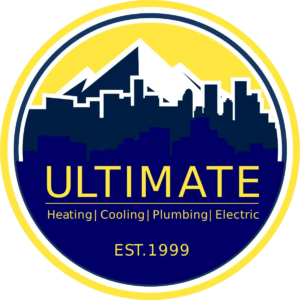At the start of the early 20th century, Colorado’s average summer temperature was in the mid-60s°F. Today, it’s in the low 70s and expected to rise a further 5°F by 2050. On the upside, the Energy Information Administration expects average electricity rates of 10 cents per kilowatt-hour by 2050, thanks to the widespread adoption of renewable energy.
Despite the potential reductions in future electricity rates, there’s still a risk that our summer utility bills could increase as we run our ACs for longer to combat increasingly hot summers. No doubt Coloradans will adapt to the changing climate, but what are some ways to lower our energy bills and improve our home’s comfort in summer? Read below to find out.
Practical Energy-Saving Tips
There are more ways to save energy in summer, aside from switching off your HVAC. Try these:
• Use window coverings to deflect sunlight and keep your home cool. Examples include awnings, shutters, exterior/interior shades, and storm windows. Nearly 80% of sunlight on a standard double-pane window enters the home as heat.
• Stick window film to your glass. Low-E film (low-emissivity) is a popular choice. The U.S. General Services Administration estimates 34% of HVAC energy is lost to windows, and that high-quality films improve a home’s insulating performance by over 90%. On average, the material costs just $7.75 per sq. ft. for a single-pane window and you’ll recover the costs within 2-6 years.
• Keep doors open when the AC is on. A room with a closed door creates negative indoor pressure that sucks air from elsewhere in the house, forcing your HVAC system to expend more energy. By allowing cool air to circulate freely around the house, you’ll also improve indoor air quality as you’re not disrupting your home’s ventilation.
• Turn off incandescent lights when not in use, as only 10% of its energy is converted to light and the remaining 90% is heat. Switch to a CFL or LED bulb as they’re up to three or four times more energy efficient and last 25 times longer.
• Seal cracks and openings to stop warm air from creeping into your home. Common trouble spots include flues (or chimney shafts), attics, garage walls, and window frames.
See the U.S. Department of Energy’s infographic showing additional places for air leaks at home.
Optimize your thermostat heating and cooling schedule and experiment with different temperatures to determine what’s most comfortable for you. By using a smart thermostat, you can time your HVAC so it’s turned off when you’re not at home. If your house is hot, avoid blasting your AC at a lower-than-normal temperature as it wastes energy—simply wait for your space to cool down slowly on its regular setting. For maximum energy savings, aim to keep the difference between the outdoor and indoor temperatures as small as possible.
Causes of Poor Home Energy Efficiency
In a 2020 Knight Frank Global Buyer Survey on what buyers look for in a home, over 80% said energy efficiency is a priority. With HVAC, the main cause of energy wastage is an old or poorly maintained system. Most heating and air conditioning units last a maximum of 20 years, provided they’re well maintained. When parts wear out (or get dirty) your system has to work harder than normal to distribute the air around your home.
Wrongly sized heating and air equipment is another common cause of poor home energy efficiency. This is often due to design firms or housing contractors outsourcing work to third-party companies. Hiring an in-house HVAC engineer for any significant renovation project is the best way to avoid this problem. Learn more about why in our post: Energy Efficient Residential HVAC Design in Denver.
If you’re unsure of the age or condition of your home heating and air setup and are concerned about its energy efficiency, be sure to hire a certified technician to conduct an inspection. Also, check out our guide outlining the main signs of requiring annual • • • HVAC maintenance.
• Upgrading an Old Home to Save Energy
• One widely regarded method for assessing a home’s energy efficiency is whether it has an ENERGY STAR certification, which indicates it’s at least 10% more efficient than a non-certified one. As of 2022, over 2.3 million homes have one. The requirements for eligibility are based on a wide range of criteria, such as:
• Energy Factor (EF) rating of gas, electric, or oil heaters
• Thermostat type
• R-values of duct, wall, ceiling, and crawlspace insulation
• Annual Fuel Utilization Efficiency (AFUE) ratings of gas and oil boilers/furnaces
• Seasonal Energy Efficiency Rating (SEER) of ACs and heat pumps
Compared to newly built homes, older properties are rarely as energy efficient because of outdated equipment and poor quality insulation. Fortunately, optimizing an old home’s energy usage is totally doable by:
Using ENERGY STAR certified consumer products throughout the home. This includes lighting, kitchen appliances, office equipment, and electronics.
Replacing old heating and cooling equipment with an ENERGY STAR certified light commercial HVAC setup.
Conserving energy in the summer is achievable, even on a tight budget. If you’re looking for further advice on keeping your house cool or need help with your HVAC setup, get in touch today.


